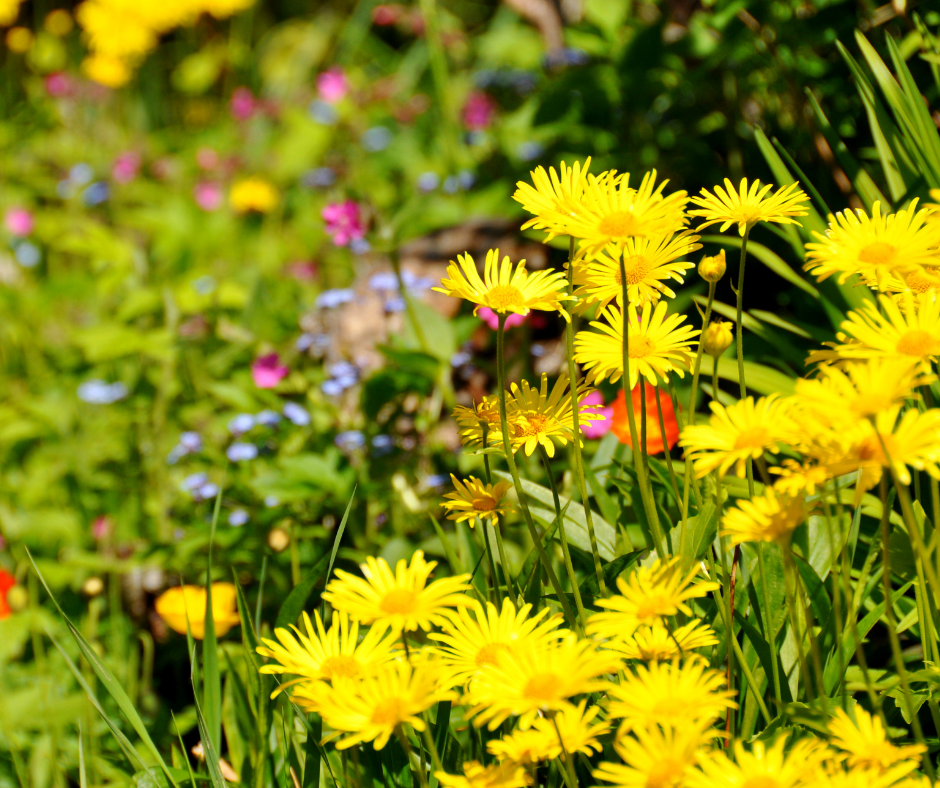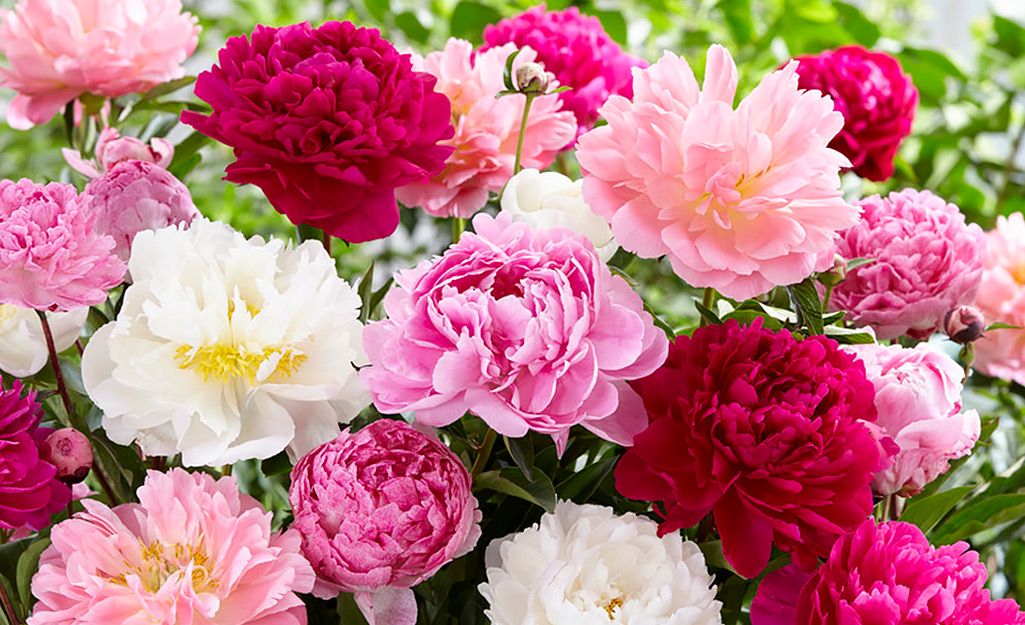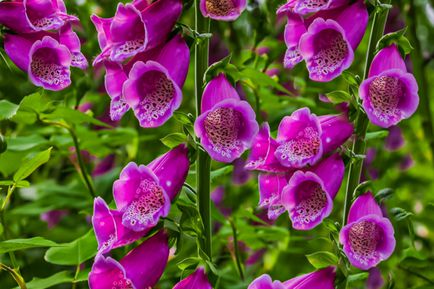Annuals vs. Perennials—What’s Right for Your Garden?
By Axis Fuksman-Kumpa • March 18, 2022

When you’re selecting plants for your landscaping—particularly flowering plants—one of the first things you’ll see on the nursery label is “annual” or “perennial.” In the simplest terms, these words tell you how long you can expect your new plant to live, whether that’s a single season or they’re in it for the long haul—but there’s much more nuance to how annual plants and perennial plants will perform in your garden. Here’s what you need to know to pick the right plants for your landscape.
What is an Annual?
Annuals are plants that complete their entire lifecycle in one year. When seeds are planted in the spring, they will germinate, flower, seed again, and die by the time winter arrives. They’re all about reproducing fast, which is good news for flower-loving gardeners. If you prune back dying blooms (a practice known as “deadheading”), most annuals will reward you with more plentiful blooms that keep coming until the first frost.
The downside of annuals is their short lifespan. If you want to grow the same plants again next year, you should collect their seeds and plan to germinate them again next spring. Some annuals will easily self-sow when they drop their seeds, so opt for plants like sweet alyssum or cornflower if you want your annuals to return with less work.
Types of Annuals
Knowing a plant is an annual is just the starting point. There are three major subgroups of annuals that are grouped by their growing season.
- Hardy or cool-season annuals are happy to grow in the cooler temperatures and even light frosts of early spring and late fall, meaning that you can plant them earlier and expect a longer growing season. Popular picks are pansies, calendula, sweet pea, and swiss chard.
- Tender or warm-season annuals come from warmer climates and depend on the summer sun to thrive. It’s best to wait until late spring to plant these annuals as they are unlikely to survive cold temperatures. These include marigolds, geraniums, zinnias, and impatiens.
- Half-hardy annuals are somewhere in the middle. They can survive cool air and soil temperatures but will be damaged by frost, meaning that they have a shorter growing season than hardy annuals but a longer one than tender annuals. This grouping includes many common plants like cosmos, nasturtiums, amaranthus, and larkspur.
Make sure to compare the hardiness zones of your area and your desired plants. A plant that’s considered half-hardy in Virginia might need to be planted in the warmest part of the season in Massachusetts!
The Benefits of Annuals
Annuals are an excellent pick for people who want a high volume of blooms all season long. They can’t be beat when it comes to flower production and they reach maturity faster than other plants. They offer a pop of brilliant color anywhere it's needed in your landscaping.
Going annual vs. perennial is a great choice for gardeners who like to switch things up year after year. While you can easily replant the same annuals every spring, you can try a new color palette every growing season by planting a fresh annual in the same place. They’re the perfect low-commitment plant to fill any empty spot in your garden.

What is a Perennial?
Perennials are plants that will return year after year. These plants are typically more cold-hardy so that they can survive the winter and return the next spring. They also generally have a shorter blooming period, flowering only in one season (i.e. spring, summer, or fall) instead of for months at a time like many annuals.
While perennials should last longer than a year, some have shorter natural lifespans and only live three to five years. The perennials that can return for decades might require more upkeep to keep their growth healthy—some plants need thorough pruning or even dividing and replanting. With those caveats in mind, many perennials are easy and practically take care of themselves. Be sure to research the specific care requirements of any perennials you’re interested in growing.
Types of Perennials
Perennials include a wide variety of flowers, leafy plants, and garden crops. These plants all overwinter by nature, so they don’t fall into the same cold-sensitive categories as annuals—although not all perennials can survive cold northern winters. You should make sure to research the plants that grow best in your climate, but these are some of our favorite perennials that we’ve had success landscaping with across the country:
- Perennial flowers: daylilies, lavender, asters, peonies, bee balm, coneflowers, bleeding hearts, poppies
- Edible perennials: rhubarb, blueberries, chives, asparagus, artichokes, watercress, kale, raspberries
You might also hear the terms “tender perennials” or “temperennials” used—these describe plants that are treated as annuals in many parts of the country, but can return like perennials in warmer climates. This list includes many succulents and tropical plants like agave, begonias, and alocasias.
The Benefits of Perennials
The most obvious benefit of perennials is that you plant them once and they keep coming back! Even though perennials often cost a little more than annuals, that investment pays off over years of beautiful growth. Even perennials that only last a few years can generally be propagated through division or regrown from seed to keep your crop coming back.
Once their root systems are established, perennials are typically hardy plants that require less frequent upkeep and less water, making many perennials a good pick for low maintenance gardens. If you select native perennials, they can become a wonderful established source of food and shelter for local pollinators and other wildlife.
The biggest drawback of perennials is that you might not get a bloom time that’s as extended and vigorous as you would with flowering annuals. You can avoid a lack of blooms in your garden by planning ahead and planting perennials that bloom in each season so you’re never without blossoms.

What About Biennials?
Biennial plants are like the middle child of the plant family. They’re not as long-lived as a perennial, but they can survive the winter unlike their annual counterparts. Biennials have a two year growth cycle. They typically germinate and grow in their first year and then bloom and die in their second year of life, although some can manage to bloom in their first year if they’re started early enough. Common biennials include hollyhocks, sweet Williams, carrots, celery, and cabbage.
When you’re choosing plants for your landscaping or garden bed, there are no right or wrong answers. You don’t have to commit to only getting perennials or annuals—on the contrary, we enjoy using a variety of each in most of our designs. The important thing is to understand the needs of the plants you’re selecting and making sure they’re the right fit for you and your landscape. With that in mind, you can’t go wrong! (But if you’d like a hand in picking the right plants for you, we’re happy to help.)

What questions do you have about annual and perennial plants?
Read more about: Landscape Design Tips